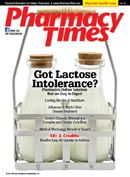Publication
Article
Pharmacy Times
Medication Safety: Best Practices in Error Reporting
Author(s):
Everyone learns from mistakes. Health care professionals in particular learn a great deal from error-reporting systems and should be encouraged to use best practices to report errors when they occur.
Everyone learns from mistakes. Health care professionals in particular learn a great deal from error-reporting systems and should be encouraged to use best practices to report errors when they occur.
Error-reporting systems represent one of the primary means by which health care providers learn about:
• Potential risks: hazardous conditions hidden in processes
• Actual errors: errors that occur during the delivery of patient care
• Causes of errors: underlying weaknesses in systems and processes that explain why an error happened
• Error prevention: ways to prevent recurrent events and, ultimately, patient harm
Error reporting is a fundamental component of a safety culture, but persuading health care workers to submit reports is not easy, given the potential disincentives to reporting. First, candid confessions of mistakes are not particularly popular. Individuals have a natural desire to correct the error and then forget that the incident ever happened. Even if workers are willing to speak up, they may believe that doing the extra work to report errors is not feasible or worth their time, especially if they feel that no changes will be enacted as a result of their reporting. Workers may also be reluctant to report if they fear that doing so will get them or their colleagues in trouble or impact their license and job.
Regardless of potential disincentives to report, some highly functional errorreporting systems exist, including the Institute for Safe Medication Practices Medication Errors Reporting Program. From these systems, best practices that promote error reporting can be identified. These best practices fall into 6 categories:
1. Trustworthy. Those who receive and act on error reports must earn the trust of reporters and prove that the program is sensitive to reporters’ concerns—particularly the fear of punishment. Feelings of trust are fostered by leaders who demonstrate a clear passion for safety, acknowledge the high-risk nature of health care and human fallibility, and use errors to assess system performance, not staff performance.
2. Confidential. Those who receive reports must keep the identity of the reporter, the names of the workers involved in the errors, and the location of the event confidential. Anonymity when reporting is not recommended, as those who receive the information would not be able to talk to the reporter or others involved in an error to learn about the causative factors. Anonymity also signals to reporters that it may not be safe to provide their identity or location. Removing identities after the error has been fully investigated is an option.
3. Clear and easy. Those who receive reports must pay attention to the format and length of the required report. If the expected report is too long, it will stifle reporting; if the report is too short, it may not provide enough information to make it useful. Instead of broad, general questions, the report should prompt for a narrative description of the event and ask questions that are specific to the type of event (eg, medication error, fall, error when using a medical device) to prompt for the most pertinent information about the reporter’s perceptions, decisions, and actions. Event-reporting mechanisms should be easily accessible and include both formal and informal ways of accepting information (eg, oral, written, electronic).
4. Rewarding. Recognition for playing a positive role in patient safety through reporting should be acknowledged by those who receive reports and by organizational leaders and managers. The largest reward is to know that the report resulted in effective system-level action.
5. Credible and useful. Few things impede reporting more than perceived inaction and failure to use the information contained in a report to improve safety. Those who receive reports must provide employees with rapid and usable feedback about how reports are being used to improve systems.
6. Reinforced imperative. Those who receive reports must establish mechanisms for mentoring new staff about the error-reporting process. Additionally, the importance of reporting hazards and errors should be stressed with all staff by including clear expectations for reporting activities on all job descriptions and performance evaluations.
Dr. Gaunt is a medication safety analyst and the editor of ISMP Medication Safety Alert! Community/ Ambulatory Care Edition.
Subscribe to Newsletter

Pharmacy Times and the Institute for Safe Medication Practices (ISMP) would like to make community pharmacy practitioners aware of a publication that is available. The ISMP Medication Safety Alert! Community/ Ambulatory Care Edition is a monthly compilation of medication-related incidents, error-prevention recommendations, news, and editorial content designed to inform and alert community pharmacy practitioners to potentially hazardous situations that may affect patient safety. Individual subscription price is $52 per year for 12 monthly issues. Discounts are available for organizations with multiple pharmacy sites. This newsletter is delivered electronically. For more information, send an e'mail message to community@ismp.org, or contact ISMP at 215-947-7797.







